Written by Ashley Pastore, Customer Experience Manager at CORA Physical Therapy
No matter where you are in the United States right now, it’s hot. Like triple digits in the Pacific Northwest hot. Days of record-breaking temperatures with deadly force hot. Two counties in Oregon hitting 117 degrees hot. As of July 6, the state medical examiner had reported 107 heat-related deaths – 30 of those reported as the result of hyperthermia, or death by excessive heat.
It’s a long word, but the physics of it is easy enough to understand: thermoregulation (heat in vs. heat out). Thermoregulation is controlled by a region of your brain called the hypothalamus. It activates receptors in your skin and other organs that cause you to lose heat and keep a normal core temperature. When your body gets really hot, it relies on sweat evaporation to dissipate heat. If the heat entering your body is more than the rate of heat leaving your body, your core temperature will rise and you will be at risk for a heat-related illness.
The four heat illnesses on a continuum from mild to life-threatening:
- Heat rash can appear when excessive seat gets trapped under your skin, blocking sweat glands. This stinging skin irritation can turn your skin red.
- Heat cramps occur when you’re sweating so much, losing salt (electrolytes) and fluids, that your muscles cramp or spasm. Common when you are exercising in high temperatures.
- Heat exhaustion may happen after a longer period of time in high temperatures where you do not receive enough fluids. Likely to experience heavy sweating, a fast and weak pulse, and rapid breathing.
- Heat stroke is caused by a quick increase in core temperature as a result of high heat and humidity. Note: can be fatal.
Since heat stroke is the most serious heat-related illness, let’s take a deeper dive. It occurs when the body becomes unable to control its temperature, the sweating mechanism fails, and thermoregulation gets turned off! Body temperature may rise to 106°F or higher within 10 to 15 minutes. Heat stroke can cause death, organ failure, or permanent disability if emergency treatment is not provided. This is a call 911 and get treatment within 30 minutes type of situation.
Anyone can get a heat illness, but the risk is higher for:
- Infants and children up to around age 4
- Summer athletes
- Seniors 65 and older
- Those who are overweight
- People who exercise or work outdoors
- Anyone with a condition like heart disease or high blood pressure
- People who take certain medications, like drugs for depression or insomnia
So while heat illness seems like an obvious and preventable hazard, the side effects of are pretty sneaky. People expect heavy sweating, muscle cramps, and feeling uncomfortable under glaring sun, but heat stroke is far more serious and because dizziness, headache, confusion, nausea, and fainting are symptoms, you might not know it’s even hitting you until it’s too late.
Use the following to keep yourself from getting overheated:
- Avoid going outdoors for activities or exercise when the temperature and humidity are dangerously high. Monitor the weather and chose your outdoor times wisely.
- If you must exercise or work outside in hot, humid weather, wear a hat and loose, lightweight, light-colored cotton clothing.
- Create your own shade! Wear a wide-brimmed hat and sunglasses.
- Make sunscreen part of your daily routine. A sunburn reduces your body’s ability to cool down.
- Drink water every 15 minutes when working or exercising in a hot environment, even if you’re not thirsty. If you need to be out in extreme heat (heat index over 103°F), drink a total of two to four glasses (16 to 32 ounces) of water each hour.
- Take periodic rest breaks in the shade, a cool area or air-conditioned space.
- Avoid drinking alcoholic beverages (save that ice cold brewski for an end of day treat).
- Pace yourself. Rest often. Don’t ignore warning signs.
